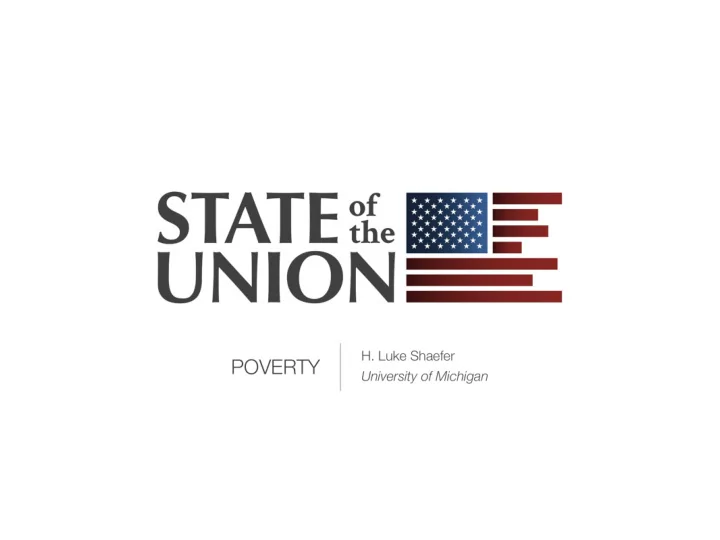

Women, Men and Poverty H. Luke Shaefer Associate Professor of Social Work and Public Policy Director of Poverty Solutions University of Michigan Co-authored with Beth Mattingly and Kathryn Edin
– Risk of eviction is graded by income in the SIPP Analysis by Sam Dickman, MD, Department of Medicine, San Francisco General Hospital, UCSF
An artifact of measurement? • OPM and SPM both find that women have higher rates of poverty than men • But SPM narrows the disparity • Does SPM get it right?
Material Hardship as External Validation Figure 1 Levels of Poverty and Hardship in 2011 30.0% 20.0% 16.4% 16.1% 15.0% 14.9% 10.5% 8.9% 8.1% 7.9% 10.0% 6.0% 5.7% 4.2% 0.0% s s ) y e e s y s M M 0 n d e e t g t t 8 i a i P P s r o e i r a t 9 u r u n S s e i O g l 1 c c a t i e n ( t n t e e e r u p e s l o s n r x a n m n n m e o c c i o i i i i y m t d d / d d p t o d e o n o l m o l o n m o e p o n h i u r m F f h o e s t n e w s c e n e o u e b o m n o o U l C r d l n l h y o n e U r f F i l e a h e V i e m t n b i e t l - s l t e s r F a e P t e e m t o n d i D Official poverty and supplemental poverty rates are in line with the rates of core metrics of material hardship —
• Relative to men, women report: • about 1.4 times the rate of poverty by OPM • almost 1.2 times the rate of SPM, and • a bit less than 1.2 times the rate of household food insecurity
• Adult women report higher rates of poverty and hardship than men • This holds true by: • Deep poverty, overall poverty, and near poverty; • by the official and supplemental poverty measure — although SPM narrows the disparity • and by household food insecurity, which finds food hardship rates in line with SPM • Stratifying by other characteristics such as race would likely offer a more nuanced story • And it is unclear how the story might change if the institutionalized population was added
poverty.umich.edu H.Luke Shaefer, Director Lshaefer@umich.edu 734.936.5065
Recommend
More recommend